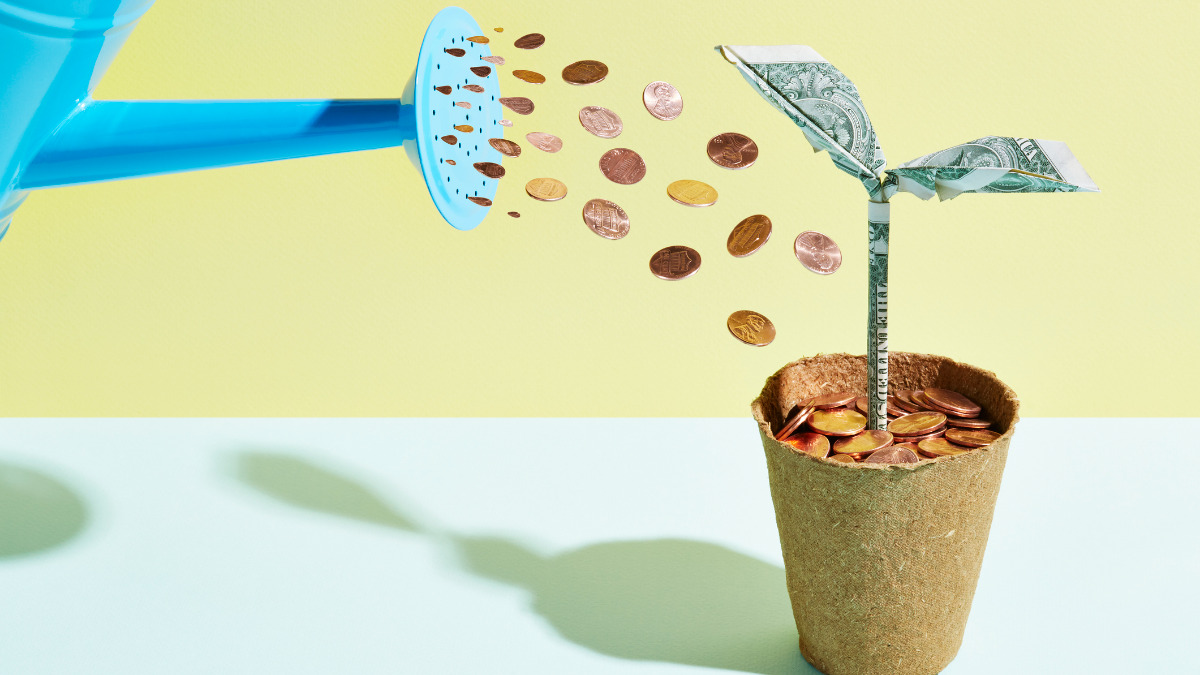Monsters of Rock: BHP launches long term copper growth plan as profits slide

Pic: Getty Images
- BHP issues $5.6bn final dividend payment as it flags major copper growth plans
- CEO Mike Henry remains bullish on China despite recent steel industry woes
- Woodside, 29Metals and Austin Engineering among the reporting names today
BHP (ASX:BHP) will toss US$3.8 billion ($5.6bn) at shareholders with a final dividend of US74c a share, taking its total payouts for FY2024 to US$7.4bn ($10.9bn).
That came in below last year’s US80c final payout, with capex up 31% to US$9.3bn and profits 39% lower to US$7.9bn, hit by impairments from the planned closure of its Nickel West business in WA and Samarco Dam failure provisions.
That was partially offset by the US$700 million post-tax gain on the sale of its Blackwater and Daunia mines to Whitehaven Coal (ASX:WHC).
While underlying attributable profit lifted 2% to US$13.7bn and underlying EBITDA rose 4% to US$29bn, profit from operations was down 24% to US$17.5bn.
According to BHP’s results capex is expected to lift to US$10bn in FY25 with a massive US$500m to be spent on exploration and US$11bn expected in 2026 and each year in the medium term.
The vast bulk of exploration spend has been directed to Copper South Australia, where a long term strategy was unveiled today to lift output from 310,000-340,000t this year (second half weighted) to over 500,000tpa by the early 2030s and 650,000tpa by the middle of the next decade.
FID on the first phase is planned in H1 FY27 via an upgrade of the Olympic Dam smelter to better suit ore from the previously OZ Minerals owned Prominent Hill and Carrapateena.
Then the development of deep deposits at Olympic Dam and the satellite Oak Dam deposit – which has a maiden inferred resource of 1.34Bt at 0.66% copper and 0.33g/t gold, with a high grade component of 220Mt at 1.96% Cu and 0.68g/t Au – would underpin a second phase of expansion.
Iron ore expansion
Somewhat against the impression made with its failed bid for Anglo American and subsequent US$3bn deal to acquire half of Filo Corp and Lundin Mining’s Josemaria project in the Vicuna region of Argentina, CEO Mike Henry today said organic growth was ‘always’ BHP’s ‘Plan A’ in copper.
M&A is also off the cards in coal as well it seems, with Henry telling journos today it would not be bidding on Anglo American’s Queensland met coal despite the fact they loomed as a potential second banana in the copper-focused merger bid at Anglo and would be a logical bolt-on to BHP’s own Queensland met coal assets.
Henry said the ‘risk profile’ was too high in Queensland, with BHP’s primary growth pursued in copper and potash. It has had a policy of not investing in growth capex in Queensland since 2022 in protest at increased royalty rates levied by the state’s Labor Government.
BHP also plans to complete studies to up its iron ore division’s capacity to 330Mtpa in 2025, with incremental growth to 305Mtpa through port and rail debottlenecking projects appearing to be locked in.
The longer term expansion could rest on market conditions, with China’s largest steelmaker Baowu warning of a ‘long, harsh winter’ to rival 2015-16, when iron ore prices fell as low as US$38/t.
BHP continues to think cost curve support will be found between US$80-100/t, with iron ore rebounding in Singapore by 1.69% to US$102.05/t today, reversing a bearish dip below US$100/t that has persisted for the past fortnight.
Henry said the iron ore market remained finely balanced, with Chinese steel demand not the only consideration.
“We need to be looking at the supply side in iron ore as well to get a read through to iron ore prices,” he said.
“And what we’re seeing currently play out in the market is really a fine balance between steel demand and iron ore supply.
“That’s had a near term impact on prices, albeit we seethings things having bounced off the downside cushion in iron ore. ”
New BHP CFO Vandita Pant said while there were concerns over China’s economy, it remained a long term economic growth centre amid rising urbanisation, saying there was still a footing for it to get closer in size to the USA.
More than the Big Oz
BHP wasn’t the only major reporting today.
Woodside Energy Group (ASX:WDS) rose almost 4% despite a 19% slide in half year revenue to US$5.99bn, 15% drop in EBIT to US$2.36bn and 14% fall in interim dividend to US69c.
Underlying NPAT was 14% down to US$1.63bn, but statutory NPAT lifted 11% to US$1.94bn, with free cash flow for the oil and gas giant up 136% to US$740m.
Production fell 2% for the June half to 89.3 million barrels of oil equivalent, though unit production costs moved in a positive direction, falling from US$8.8/boe in H1 2023 to US$8.3/boe in H1 2024.
The US$1.31bn interim dividend payment represented 80% of Woodside’s underlying NPAT.
In the world of copper, 29Metals (ASX:29M) rose 1.3% after trimming losses from $306.6m in H1 2023 to $109.2m in H1 2024, upping copper production from ~10,000t to ~14,200t.
The company was impacted last year by flooding that led to the closure of its Capricorn mine in Queensland.
Austin Engineering (ASX:ANG) meanwhile came up in front of a tough crowd after declaring a 1.2c dividend and 318.3% lift in statutory NPAT to $29.7m on results that nonetheless disappointed investors.
It’s set guidance for FY25 of ~$350m in revenue and $50m in underlying EBIT, up from $313.2m and $38.6m respectively in FY24.
West African Resources (ASX:WAF) was unchanged after announcing a roughly expected $92m after tax profit from its Sanbrado mine in Burkina Faso.
Making gains
Alcoa Corporation (ASX:AAI) (alumina) +3.1%
Ora Banda (ASX:OBM) (gold) +2.8%
Pilbara Minerals (ASX:PLS) (lithium) +2%
Fortescue (ASX:FMG) (iron ore) +1.8%
Eating losses
Aurelia Metals (ASX:AMI) (gold/copper) -5.7%
Westgold Resources (ASX:WGX) (gold) -2%
Gold Road Resources (ASX:GOR) (gold) -1.7%
Spartan Resources (ASX:SPR) (gold) -1.8%

UNLOCK INSIGHTS
Discover the untold stories of emerging ASX stocks.
Daily news and expert analysis, it's free to subscribe.
By proceeding, you confirm you understand that we handle personal information in accordance with our Privacy Policy.








